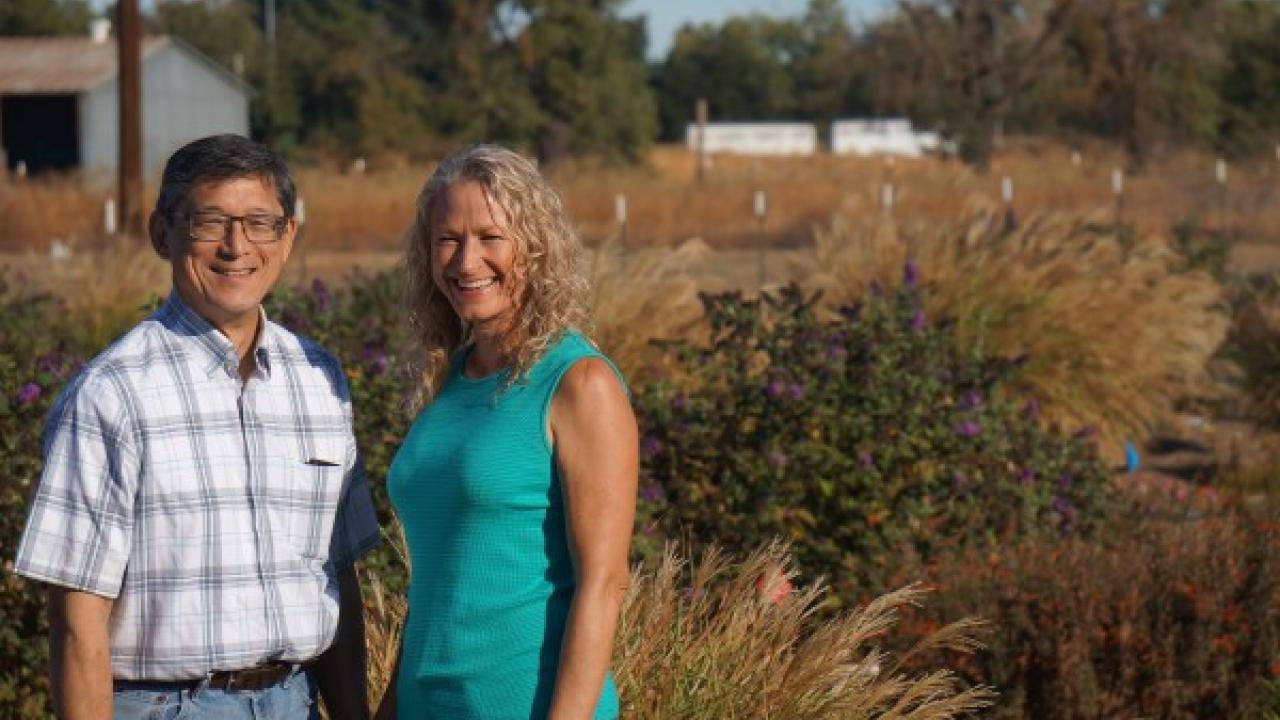
UC Reseachers: How low water can our landscapes go?
According to a California Department of Water Resources study, about 53 percent of our household water use goes toward irrigating our landscapes.
So, when it comes to saving water, cutting back in our outdoor spaces is an obvious first step toward conservation. But just how much water can we cut back without turning our yards into a Western movie set complete with tumbleweeds?
That’s the same question asked by University of California Agriculture and Natural Resources Cooperative Extension researchers Loren Oki and Karrie Reid.
Since 2004, they have been testing a variety of plants at the UC Davis Plant Science field research station on south campus. Behind a locked gate, a short gravel driveway away from Old Davis Road, lies an acre exposed to full sun as well as a half-acre exposed to 50 percent shade, where they test plants’ ability to thrive with different levels of water.
“We study these plants for two years at a time,” explains Reid, UC Cooperative Extension adviser for California’s Central Valley region. “The first year, we water them about once a week to get them established. A healthy root system is the key component of long-term drought-tolerance. Just because you buy a low-water plant, doesn’t mean it doesn’t need water when it’s young.
“The second year it’s trial by fire,” Reid says. “This time we study how multiples of the same plant respond to a variety of water deficit scenarios.”
From May to November — a normal growing season for this area — they supplied the subject plants with varying levels of water: high (once every 13 to 18 days); medium (once every 16 to 23 days); low (once every 26 to 34 days); and very low (once approximately every 58 days, or twice during the growing season).
“We want to be able to provide consumers with a source of beautiful landscape materials that will flourish in a wide variety of California climate zones with little input of water or chemicals,” says Loren Oki, UC Cooperative Extension specialist in landscape horticulture with the UCD department of plant sciences.
“A corollary goal is to provide the nursery industry with a source of new and interesting, economically advantageous and environmentally sound plant revenue.”
Like most businesses that rely on consumer demand, the horticulture industry thrives on a constant influx of new and beautiful plants to tantalize its customers year to year, and, despite growing demand for low-input plants — meaning plants that are drought-tolerant, have few pest problems and do not require fertilizers to keep them looking their best — they have been slow in coming to the mainstream nursery market.
That’s where studies from researchers Oki and Reid help to fill in the blanks.
Their research project started in 2004 with UCD’s Arboretum All-Stars, plants that thrive in their Central Valley location under a low-water watering regimen (generally twice a month), looking good at least three seasons a year, resisting pests and diseases, and attracting beneficial wildlife such as bees, insects and birds.
“We loved the list, but because we wanted to also be able to recommend these plants to the nursery industry for propagation,,” Oki says. “We not only wanted scientific data to back up our low-water claims, we also wanted to be able to provide growers with standard protocols for what it takes to propagate these types of plants successfully.”
Adds Reid, “Our research is not just about our particular planting zone either. When we find a plant that performs, we test it out in up to nine different climate zones throughout the state. That’s where our incredible Master Gardener program comes into play.
“They will take our star performing plants and conduct further assessments in demonstration gardens throughout California, and then we incorporate their feedback and scores into our final reports.”
UCD recently completed a study on kurapia, a newly developed, highly versatile groundcover that was developed and now is widely used in Japan. It is available for the first time to the public at the Arboretum and Public Garden plant sale on Saturday.
“Kurapia is a great option where you need a groundcover that won’t get irrigated. I think it will be great in what they call ‘hellstrips,’ ” Reid says. “That’s the area between the sidewalk and the street where it’s notoriously difficult to grow anything. Kurapia will do just fine there! Homeowners may want to consider using it as a lawn replacement, too. We’ve found that it looks good year-round.
“Really the public wants it all,” she continues. “Whether you are a homeowner or a large-scale landscaper, we want beautiful and low-water. So we don’t solely look at water use. We want to also know how irrigation and its frequency correlate to attractiveness, seasonal interest and blooms. We report on that, too.”
The researchers’ full reports can be found on the California Center for Urban Horticulture’s website, ccuh.ucdavis.edu.
